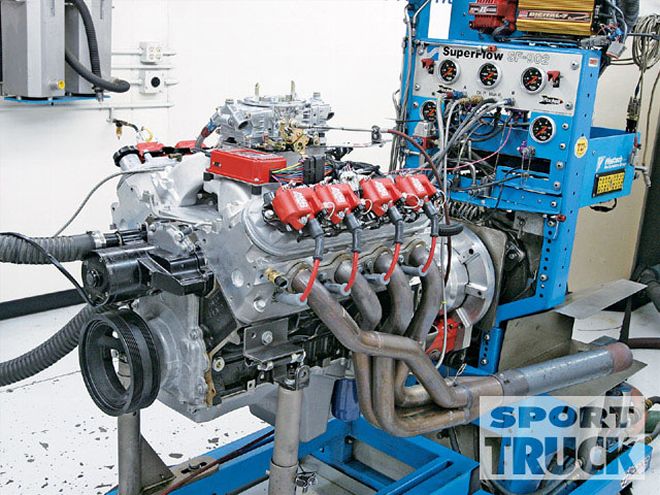
| 1973 Chevy C10 Ls1 Engine Swap engine
You've got a lot of options when it comes time to repower your project truck. Certainly, rebuilding the original engine is a cost-effective choice, but is it the best use of your time and will it yield the results you're ultimately after? Depending on who is doing the wrenching, your engine build might not turn out the way you'd like it to. The easier solution is to simply call up your local GM Performance Parts-certified dealer and choose one of the company's many crate engine options. After that, you're just an engine swap away from monster horsepower and, quite possibly, a better driving experience.
We just picked up a '73 Chevy C10 pickup with the intent of turning it into a respectable cruiser. Our first goal after taking delivery of the dilapidated truck was to swap out the worn-out Gen 1 small-block 350-cid engine and put something a bit more modern in its place. After weighing our options, we decided that transplanting a carbureted version of GM's LS1 powerplant would be painless and run hard while yielding respectable fuel economy with an overdrive transmission.
Keeping our wallet in check was as simple as choosing the smallest LS-based engine GM offers, the LS327/327. This 5.3L powerhouse is similar to the one offered in late-model GM pickups but with a few notable exceptions. Your garden-variety 5.3 puts out 295 hp and 325 lb-ft of torque; GMPP advertises the LS327 to crank out 327 hp and 347 lb-ft of torque by way of a more aggressive camshaft and a friction-reducing piston coating. According to GM, not only is this engine an excellent candidate for an engine swap in an older project truck, but also for late-model Silverados or Sierras that are ready for a heart transplant.
We took our engine to Westech Performance Group for a dyno session to validate GM's numbers and took advantage of the tuning session to test some new parts from MSD, Holley, and Edelbrock. Baseline testing showed our engine cranking out 361.8 hp and 378.1 lb-ft of torque with an Edelbrock Performer RPM intake manifold, MSD ignition system, and a Holley Street HP Series 650-cfm carburetor. The power peaked at 5,600 rpm before the valve springs let us know they were not going to allow the engine to rev any higher without floating the valves. So we swapped out the stock springs for a new set of Comp Cams Beehive valve springs and a new Comp Thumper camshaft that would give the engine more power upstairs.
The cam swap completely changed the attitude of the exhaust note. The engine was breathing through a set of Kooks long tube headers with 18-inch collector extensions. After the cam change, the engine growled at idle with one of the lumpiest idles we've heard in a long while. It sounded like every great V-8 should. The cam and spring upgrades were worth 23.2 lb-ft of torque at 4,300 rpm and 49.6 hp at 6,400 rpm. More importantly, the motor was safe to rev into mid-6,000-rpm territory now, without any hint of valve float. Once we were satisfied the rings were seated during our initial dyno pulls and all was well, we drained the conventional motor oil from the pan and refilled it with Lucas Oil's 5W30 full synthetic motor oil. The change was worth another 3 hp and 4 lb-ft of torque throughout the entire powerband. In the end, our 5.3 cranked out 414.5 hp at 6,400 rpm and 405 lb-ft of torque at 4,300 rpm.
The LS327/327 long-block (part number 19165542) can be purchased through GMPP retailers like Scoggin-Dickey Parts Center for $3,149.95. The Holley Street HP carb (part number 0-82651) from Summit Racing adds another $501.95, the Edelbrock Performer RPM intake manifold (part number 71187) adds $285.95, the MSD 6LS controller (part number 6010) adds $312.70, the 8.5mm MSD plug wires (part number 32819) add $61.00, and the MSD coils (part number 8245) add $631.00 to the price tag of the motor. The running motor ends up costing $4,941.55 except for a few carb studs and base gaskets and didn't require any trips to the machine shop or an engine builder, and it rips off power numbers that'll make our Chevy run hard. Follow along with the photos and check out this economical alternative for repowering your daily driver or classic project truck.
The Build This is what the LS 327/327 looks like once its out of the crate. Except for the Kooks headers, this is what you get. Its up to you to provide the accessories, either from aftermarket companies or from the GMPP catalog.
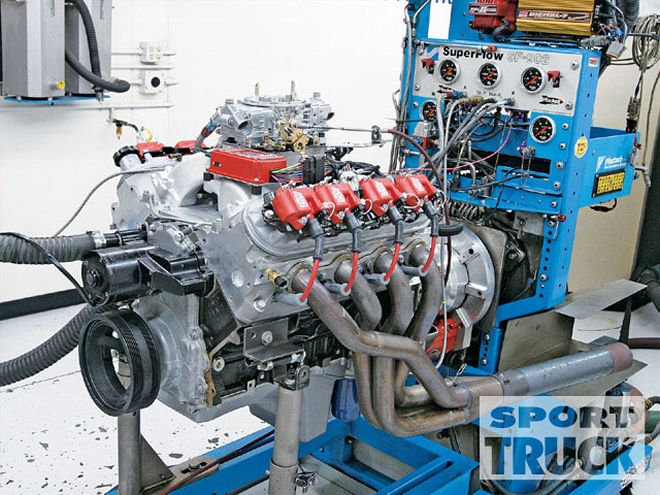
| 1973 Chevy C10 Ls1 Engine Swap ls327 Engine
The Final Word Whether you add the Thumper camshaft and Beehive springs or not, this motor rips and makes an excellent replacement mill for GM pickups. With over 325 lb-ft of torque at 2,500 rpm on tap, the LS327 has plenty of grunt for work and play. We are currently gathering motor swap parts for our '73 Chevy project truck and will report back in a couple of months how the swap went and whether we were able to score some decent fuel economy from our square-body truck.
 | 1973 Chevy C10 Ls1 Engine Swap engine
You've got a lot of options when it comes time to repower your project truck. Certainly, rebuilding the original engine is a cost-effective choice, but is it the best use of your time and will it yield the results you're ultimately after? Depending on who is doing the wrenching, your engine build might not turn out the way you'd like it to. The easier solution is to simply call up your local GM Performance Parts-certified dealer and choose one of the company's many crate engine options. After that, you're just an engine swap away from monster horsepower and, quite possibly, a better driving experience.
We just picked up a '73 Chevy C10 pickup with the intent of turning it into a respectable cruiser. Our first goal after taking delivery of the dilapidated truck was to swap out the worn-out Gen 1 small-block 350-cid engine and put something a bit more modern in its place. After weighing our options, we decided that transplanting a carbureted version of GM's LS1 powerplant would be painless and run hard while yielding respectable fuel economy with an overdrive transmission.
Keeping our wallet in check was as simple as choosing the smallest LS-based engine GM offers, the LS327/327. This 5.3L powerhouse is similar to the one offered in late-model GM pickups but with a few notable exceptions. Your garden-variety 5.3 puts out 295 hp and 325 lb-ft of torque; GMPP advertises the LS327 to crank out 327 hp and 347 lb-ft of torque by way of a more aggressive camshaft and a friction-reducing piston coating. According to GM, not only is this engine an excellent candidate for an engine swap in an older project truck, but also for late-model Silverados or Sierras that are ready for a heart transplant.
We took our engine to Westech Performance Group for a dyno session to validate GM's numbers and took advantage of the tuning session to test some new parts from MSD, Holley, and Edelbrock. Baseline testing showed our engine cranking out 361.8 hp and 378.1 lb-ft of torque with an Edelbrock Performer RPM intake manifold, MSD ignition system, and a Holley Street HP Series 650-cfm carburetor. The power peaked at 5,600 rpm before the valve springs let us know they were not going to allow the engine to rev any higher without floating the valves. So we swapped out the stock springs for a new set of Comp Cams Beehive valve springs and a new Comp Thumper camshaft that would give the engine more power upstairs.
The cam swap completely changed the attitude of the exhaust note. The engine was breathing through a set of Kooks long tube headers with 18-inch collector extensions. After the cam change, the engine growled at idle with one of the lumpiest idles we've heard in a long while. It sounded like every great V-8 should. The cam and spring upgrades were worth 23.2 lb-ft of torque at 4,300 rpm and 49.6 hp at 6,400 rpm. More importantly, the motor was safe to rev into mid-6,000-rpm territory now, without any hint of valve float. Once we were satisfied the rings were seated during our initial dyno pulls and all was well, we drained the conventional motor oil from the pan and refilled it with Lucas Oil's 5W30 full synthetic motor oil. The change was worth another 3 hp and 4 lb-ft of torque throughout the entire powerband. In the end, our 5.3 cranked out 414.5 hp at 6,400 rpm and 405 lb-ft of torque at 4,300 rpm.
The LS327/327 long-block (part number 19165542) can be purchased through GMPP retailers like Scoggin-Dickey Parts Center for $3,149.95. The Holley Street HP carb (part number 0-82651) from Summit Racing adds another $501.95, the Edelbrock Performer RPM intake manifold (part number 71187) adds $285.95, the MSD 6LS controller (part number 6010) adds $312.70, the 8.5mm MSD plug wires (part number 32819) add $61.00, and the MSD coils (part number 8245) add $631.00 to the price tag of the motor. The running motor ends up costing $4,941.55 except for a few carb studs and base gaskets and didn't require any trips to the machine shop or an engine builder, and it rips off power numbers that'll make our Chevy run hard. Follow along with the photos and check out this economical alternative for repowering your daily driver or classic project truck.
The Build
| 1973 Chevy C10 Ls1 Engine Swap engine
You've got a lot of options when it comes time to repower your project truck. Certainly, rebuilding the original engine is a cost-effective choice, but is it the best use of your time and will it yield the results you're ultimately after? Depending on who is doing the wrenching, your engine build might not turn out the way you'd like it to. The easier solution is to simply call up your local GM Performance Parts-certified dealer and choose one of the company's many crate engine options. After that, you're just an engine swap away from monster horsepower and, quite possibly, a better driving experience.
We just picked up a '73 Chevy C10 pickup with the intent of turning it into a respectable cruiser. Our first goal after taking delivery of the dilapidated truck was to swap out the worn-out Gen 1 small-block 350-cid engine and put something a bit more modern in its place. After weighing our options, we decided that transplanting a carbureted version of GM's LS1 powerplant would be painless and run hard while yielding respectable fuel economy with an overdrive transmission.
Keeping our wallet in check was as simple as choosing the smallest LS-based engine GM offers, the LS327/327. This 5.3L powerhouse is similar to the one offered in late-model GM pickups but with a few notable exceptions. Your garden-variety 5.3 puts out 295 hp and 325 lb-ft of torque; GMPP advertises the LS327 to crank out 327 hp and 347 lb-ft of torque by way of a more aggressive camshaft and a friction-reducing piston coating. According to GM, not only is this engine an excellent candidate for an engine swap in an older project truck, but also for late-model Silverados or Sierras that are ready for a heart transplant.
We took our engine to Westech Performance Group for a dyno session to validate GM's numbers and took advantage of the tuning session to test some new parts from MSD, Holley, and Edelbrock. Baseline testing showed our engine cranking out 361.8 hp and 378.1 lb-ft of torque with an Edelbrock Performer RPM intake manifold, MSD ignition system, and a Holley Street HP Series 650-cfm carburetor. The power peaked at 5,600 rpm before the valve springs let us know they were not going to allow the engine to rev any higher without floating the valves. So we swapped out the stock springs for a new set of Comp Cams Beehive valve springs and a new Comp Thumper camshaft that would give the engine more power upstairs.
The cam swap completely changed the attitude of the exhaust note. The engine was breathing through a set of Kooks long tube headers with 18-inch collector extensions. After the cam change, the engine growled at idle with one of the lumpiest idles we've heard in a long while. It sounded like every great V-8 should. The cam and spring upgrades were worth 23.2 lb-ft of torque at 4,300 rpm and 49.6 hp at 6,400 rpm. More importantly, the motor was safe to rev into mid-6,000-rpm territory now, without any hint of valve float. Once we were satisfied the rings were seated during our initial dyno pulls and all was well, we drained the conventional motor oil from the pan and refilled it with Lucas Oil's 5W30 full synthetic motor oil. The change was worth another 3 hp and 4 lb-ft of torque throughout the entire powerband. In the end, our 5.3 cranked out 414.5 hp at 6,400 rpm and 405 lb-ft of torque at 4,300 rpm.
The LS327/327 long-block (part number 19165542) can be purchased through GMPP retailers like Scoggin-Dickey Parts Center for $3,149.95. The Holley Street HP carb (part number 0-82651) from Summit Racing adds another $501.95, the Edelbrock Performer RPM intake manifold (part number 71187) adds $285.95, the MSD 6LS controller (part number 6010) adds $312.70, the 8.5mm MSD plug wires (part number 32819) add $61.00, and the MSD coils (part number 8245) add $631.00 to the price tag of the motor. The running motor ends up costing $4,941.55 except for a few carb studs and base gaskets and didn't require any trips to the machine shop or an engine builder, and it rips off power numbers that'll make our Chevy run hard. Follow along with the photos and check out this economical alternative for repowering your daily driver or classic project truck.
The Build 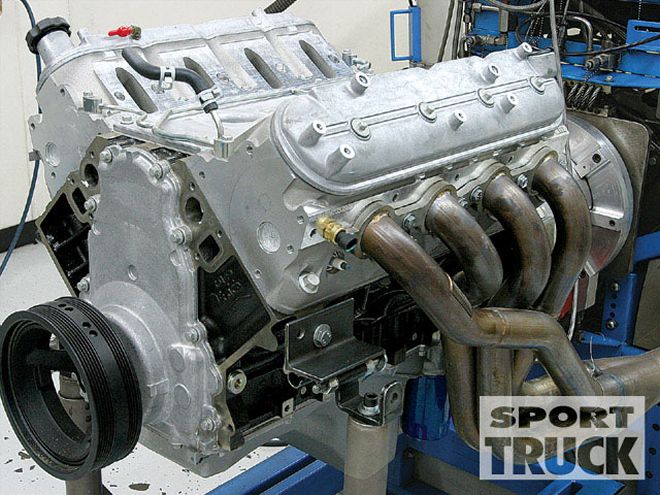
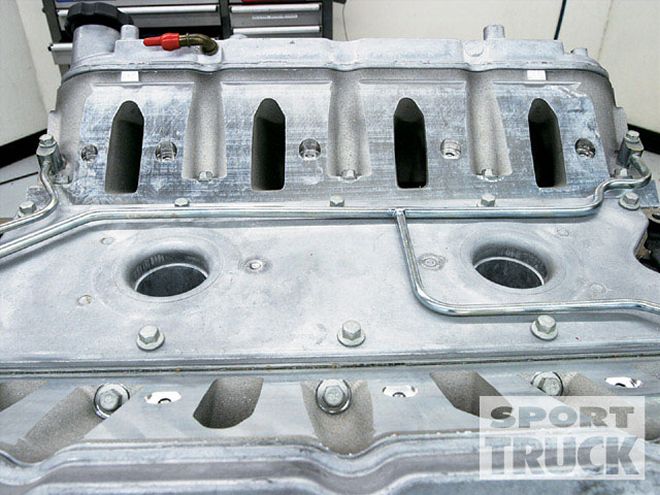
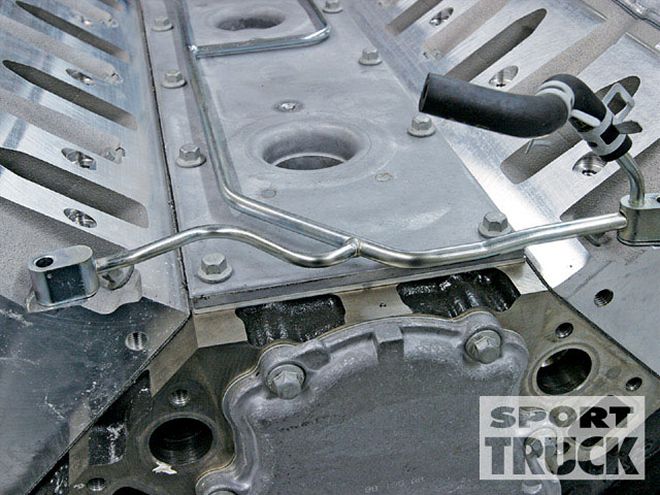
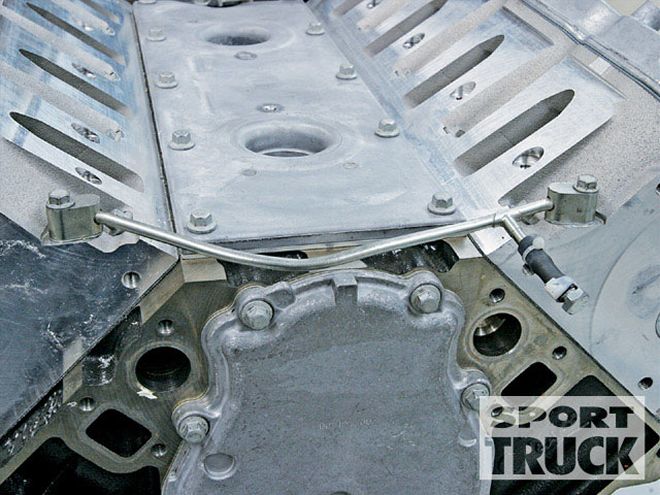
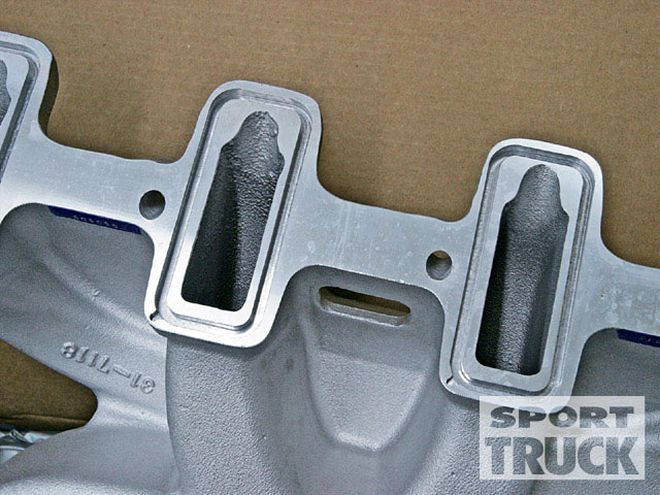
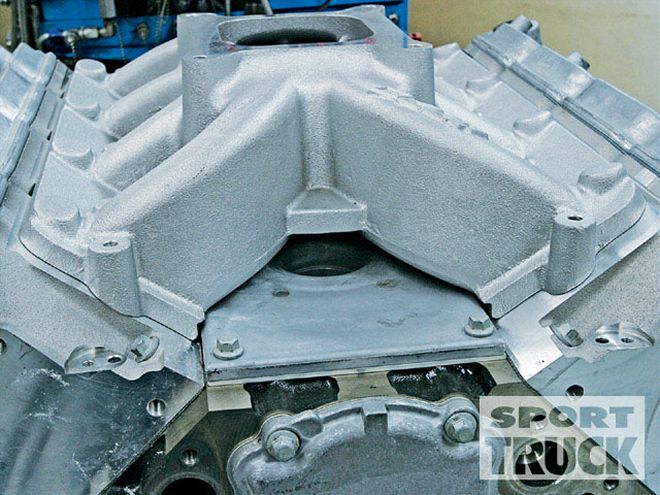
 | 1973 Chevy C10 Ls1 Engine Swap ls327 Engine
The Final Word
| 1973 Chevy C10 Ls1 Engine Swap ls327 Engine
The Final Word